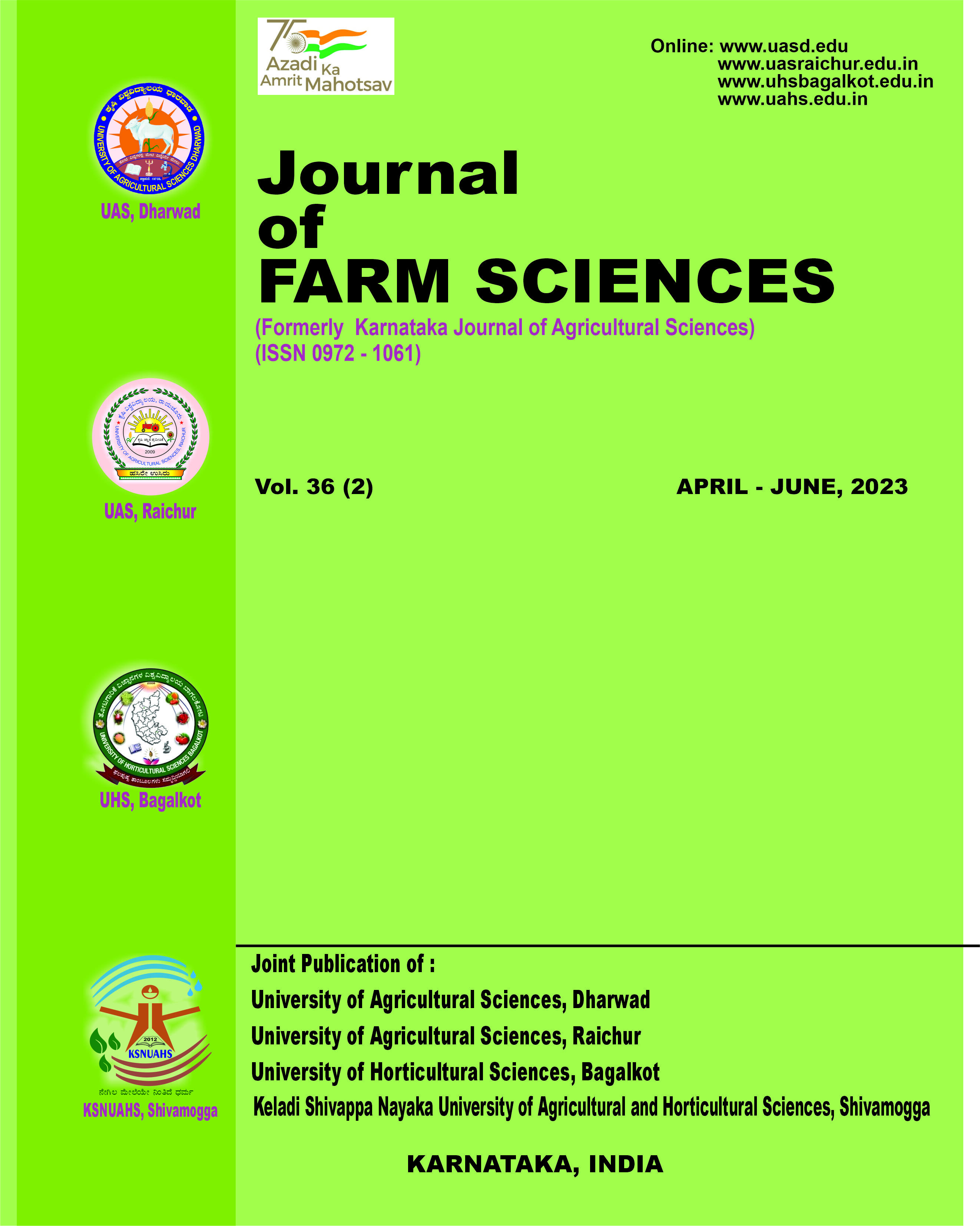Progeny variation for leaf morphometric traits of Cinnamomum zeylanicum Blume. in Uttara Kannada district, Karnataka
Abstract
Cinnamomum zeylanicum Blume, commonly referred to as Ceylon cinnamon or Dalchini, is renowned for its various culinary uses. Cinnamon leaves are widely used as spice and for the extraction of an essential oil rich in eugenol, which found wide applications in perfume and flavouring industries. Cinnamomum is genetically diverse and wide variations are observed for different traits. Due to its cross pollination behavior, an enormous diversity in Cinnamon has been produced. A two-year-old Cinnamomum zeylanicum field trial progenies in Kanagod village, Sirsi Taluk, Uttara Kannada, were evaluated for leaf morphometric traits from September 2022 to June 2023. Among the different progenies, progenies of G11, G16, K13 and S4 exhibited a distinct deep pink/purple leaf flush, while green was the most common leaf colour. Progenies of G2 and K18 only exhibited purple and light purple and indicating the production of new variants. Four leaf shapes namely ovate (26.67%), elliptic (26.67%), ovate-elliptic (26.66%) and ovate-lanceolate (20%) were recorded; but majority of the progenies exhibited an acuminate leaf tip shape (53.33%) followed by acute leaf tip shape (26.67%) and sub-acute type (20.00%); but all the progenies exhibited entire margin type. Maximum leaf length was recorded in M21 progenies (15.01 cm) and maximum leaf width for progenies of J4 (6.37 cm); but the progenies of M21 recorded the highest leaf area (69.03 cm2). Progenies from the Manchale source, M21 showed the highest biomass, with a fresh weight of 1847.78 g/plant and a dry weight of 1099.97 g/plant followed by M8 (with fresh weight of 1838.15 g/plant and 1073.93 g/ plant, respectively).


